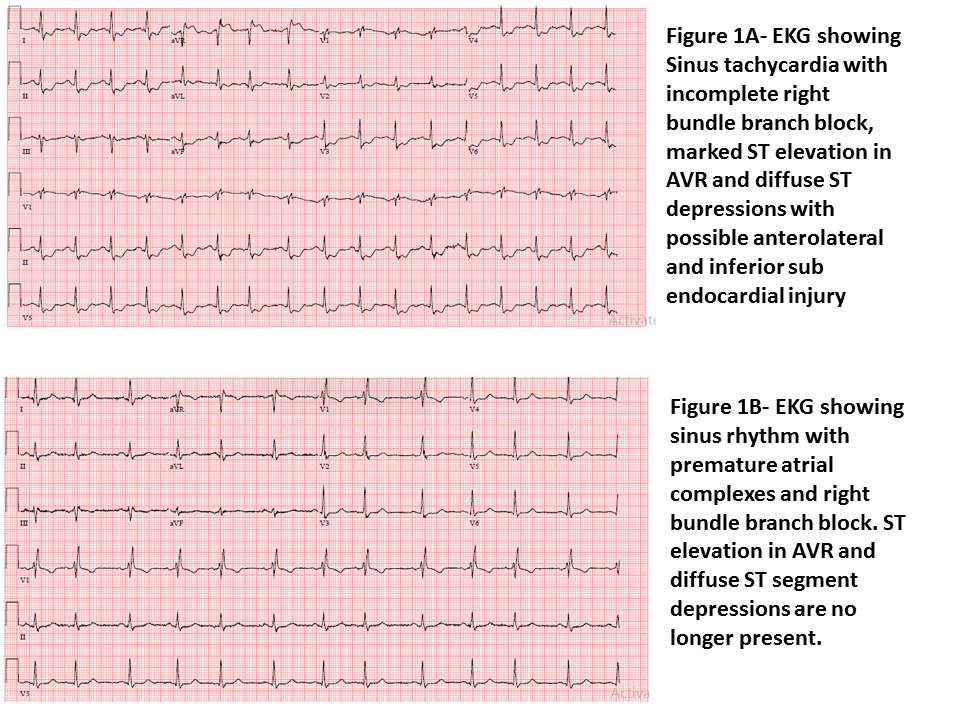Clinical Case Reports and Clinical Study
OPEN ACCESS | Volume 12 - Issue 1 - 2025
ISSN No: 2766-8614 | Journal DOI: 10.61148/2766-8614/JCCRCS
Safia Shaikh
Internal Medicine, SSM Health St Mary's Hospital, St Louis, USA
*Corresponding authors: Safia Shaikh, Internal Medicine, SSM Health St Mary's Hospital, St Louis, USA
Received: March 16, 2021
Accepted: March 22, 2021
Published: March 26, 2021
Citation: Safia Shaikh. “Transfuse To Perfuse - A Case of Anemia Causing Left Main Coronary Artery Occlusion Pattern On Electrocardiogram”. Clinical Case Reports and Clinical Study, 5(2); DOI: 10.61148/2766-8614/JCCRCS/037
Copyright: © 2021 Safia Shaikh. This is an open access article distributed under the Creative Commons Attribution License, which permits unrestricted use, distribution, and reproduction in any medium, provided the original work is properly cited.
,
An 89 year-old female with moderate aortic stenosis presented with chest pain, exertional dyspnea and melena. She was hypotensive (blood pressure 85/49 mm Hg) with heart rate of 80/min, aortic stenosis-related murmur, bibasilar lung crackles and bilateral lower extremity edema. Laboratory data showed severe anemia with hemoglobin of 4.8 g/dl (normal 11.9-15.9 g/dL), and troponin of 0.106 ng/dL (normal <0.038 ng/dL). Electrocardiogram (EKG) showed subendocardial injury-associated pattern concerning left main coronary artery occlusion (figure 1A). Antiplatelet and anticoagulation therapies were held. Patient received a packed red blood cell transfusion. Symptoms and hemodynamics improved. Repeat EKG showed resolution of ST segment changes (figure 1B). Troponin decreased to 0.066 ng/dL. Echocardiogram confirmed normal systolic function without wall motion abnormalities. Endoscopy showed a duodenal ulcer treated with a proton pump inhibitor.
Anemia causes supply-demand mismatch predisposing to ischemia. Presence of ST elevation in lead is an independent predictor for left main stem occlusion/ triple vessel disease requiring intervention. Despite EKG changes, reversible causes should be addressed prior to considering catheterization

,